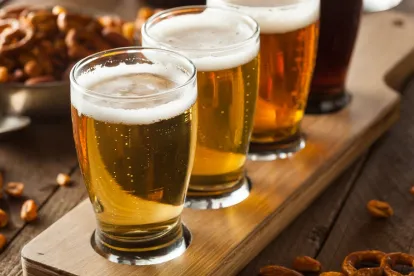The drinking age in the United States has historically teetered between 18 and 21. Under pressure surrounding the Vietnam War, Congress rolled back the minimum drinking age from 21 to 18 to reflect the draft age. Proponents of this rollback would argue that if draftees were old enough to fight for their countries, they should be old enough to drink, following the same rationale that pushed the 26thAmendment through, dropping the voting age from 21 to 18.
This drinking age shift had unintended consequences as states started lowering their minimum drinking ages. Traffic fatalities for people ages 18-21 were on the rise and more particularly, “blood borders” started popping up where in neighboring states with different drinking ages, people in high drinking age states would drive to lower drinking age states in order to buy and drink alcohol before turning 21. In response to this crisis, Congress passed the National Minimum Drinking Age (“NMDA”) Act of 1984, which withheld federal highway funding (originally 10% and now 8%) from any state, that did not comply with a federally proposed minimum drinking age of 21.
The NMDA went into effect in July of 1984 and states began to adopt the new minimum age requirement. Meanwhile, the NMDA became the grounds for a seminal Supreme Court case: South Dakota v. Dole. The Supreme Court settled that Congress may withhold federal funding, in this case highway funding, unless a set of conditions is met by the states vying for the federal funding. The Supreme Court set forth a five-part list of requirements, including:
- The exercise of the spending power must be in pursuit of the general welfare;
- The condition must be unambiguous;
- The condition must be related to the federal interest in the particular project;
- The condition itself is not unconstitutional; and
- The condition is not coercive.
When South Dakota v. Dole was decided, the Court glossed over the first three requirements, quickly concluding that they were met, and centered its opinion on the final two requirements. However, Chief Justice Rehnquist’s comments were informative for a challenge to the first and third prongs of the case in a driverless future.
With respect to the first prong, Rehnquist wrote, “Congress found that the differing drinking ages in the States created particular incentives for young persons to combine their desire to drink with their ability to drive, and that this interstate problem required a national solution.”[1] Notably, the claim for the “general welfare” is not based solely on the fact that people aged 18-21 are drinking, but rather on the concept of “ more importantly that non-uniform drinking ages incentivize these same young individuals to get behind the wheel to drive to states with lower minimum drinking ages, threatening safe interstate travel. However, with the proliferation of driverless vehicles, the ability to actively control a vehicle and therefore the well-known dangers currently associated with drunk driving should be removed from consideration in this prong. We are then left asking whether there is any other rationale for providing a consistent minimum drinking age between states in order to invoke the “general welfare.”
The challenge to South Dakota v. Dole gets even stronger when we consider the third prong. According to the Court, “Congress conditioned the receipt of federal funds in a way reasonably calculated to address this particular impediment to a purpose for which the funds are expended.”[2] If we conclude that driverless vehicles prevent drunk driving for all drivers, then the supposed impediment of young drunk drivers goes away. Without the hook of driving, there is no nexus between the minimum drinking age and roads, causing this prong to fail.
Even before the mass adoption of driverless vehicles, we may still see a challenge to the third prong, questioning whether the condition is reasonably calculated to address the underlying problem of drunk driving. In the 1980s, drunk driving was more prevalent among people ages 18-21 than among older adults. However, trends have shown a steep decline over the past three decades of teenagers pursuing their driver’s licenses. In fact, 16-year-olds are down 47% and 20-24-year-olds are down 16% from the time the NMDA was passed. With these trends, having fewer young drivers means less drinking and driving in the age group targeted by the NMDA. Further, the future of drunk driving is more likely to be found in an older age group than 18-21-year-olds. As a result, the minimum drinking age is potentially already no longer reasonably calculated to the issue of drunk driving.
It should be noted that the NMDA did not set a federal minimum drinking age, but rather incentivized (think more stick than carrot) states to adopt their own laws to encompass the federally-preferred drinking age. While the NMDA may see an eventual successful challenge, it will still take time to make changes to existing state laws, if they are made at all, and we may once again see a national patchwork of drinking ages over time. At the very least the states won’t have the pressure of highway funding holding them back anymore.
[1] 483 U. S. 208 (emphasis added)
[2] ID. at 209.



 />i
/>i
